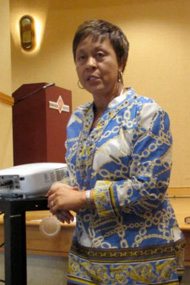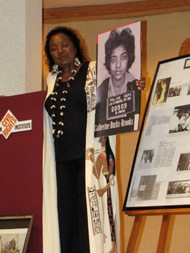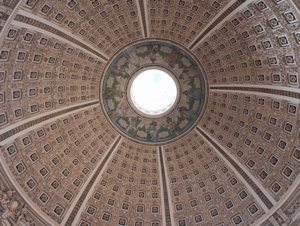Considering Eastern Christian School? Join us at an upcoming open house event or take a personal tour! Register Online
What I Did On My Summer Vacation (teacher edition)
Adirondack Mountain Great Camp. Library of Congress. Birmingham, Alabama.
What do these have in common? They are places I’ve spent parts of my summer vacations the last several years. But they are not vacation spots—these were the sites of Summer professional development I’ve done. (Well, ok–studying at an Adirondack Mountain great camp on Raquette Lake is pretty close to a vacation.)
Over my many years of teaching I have looked for opportunities to grow professionally over the Summer–in a way that can meaningfully impact my teaching at ECHS. This Summer, I spent the week of July 10-16 at Raquette Lake in the Adirondacks. The focus of the workshop, sponsored by the National Endowment for the Humanities, was to examine two developments in American history: 1) How the Adirondacks became some of the most protected land in the world due to an amendment to the New York State Constitution in the 1894–an amendment that declared that “the forest preserve as now fixed by law, shall be forever kept as wild forest lands.” This plot of land has grown to six million acres (larger than Massachusetts) and is an interesting model of public/private ownership of land. It also has led to some interesting tensions between conservationists and preservationist. 2)The other focus was on the “one percenters” of the late 19th century (Durant, JP Morgan, Cornelius Vanderbilt), who bought great camps in the Adirondacks so that they could go into the wilderness with their servants, changes of clothes, etc., “roughing it all the way.” The documents and the cultural tensions we studied will give me some good material for my American Studies class this coming year.
Last Summer (2015), I spent a week at the Library of Congress studying how to best use primary documents from the civil rights era in American history. Two things from that workshop that have impacted my teaching are 1) developing some new methods for leading discussions based on differing viewpoints (it’s called Circle of Viewpoints), and a new way for students to present their research projects in gallery walks. Not only did I utilize these this past year, but I was able to demonstrate them for our faculty, who also began to use them in their classrooms. 2) the highlight of the week, which caught me completely off guard, was meeting several friends of Rosa Parks, and several folks who had been in the Mississippi voter registration movement during the 1960’s. Their stories have had a profound impact on how I teach this turbulent time in our history.
I took the summer of 2014 off because two grandchildren arrived in our family. But in 2013 I was privileged to attend another National Endowment for the Humanities workshop that focused on the 1963 children’s crusade in Birmingham, Alabama and the bombing of the 16th St. Baptist Church, which claimed the lives of 4 young girls. This workshop has probably had the most profound impact on my understanding of the civil rights movement, a major unit our seniors study. I met a woman who was 14 in 1963, and upstairs in the church when the KKK bomb blew up outside the girls’ bathroom in the church–her best friend was killed that day. I met a freedom rider who had participated in demonstrations with John Lewis (now Congressman from GA). I met foot soldiers of the children’s crusade–when hundreds of children marched in Birmingham to demonstrate for freedom, and were met with fire hoses and German Shepherds. Mostly, I heard testaments of how faith in Jesus Christ motivated these people to stand up for justice. I have shared my experiences with most of the seniors over the last few years, as well as with the faculty and my church family. By the way–if you want to hear how I extended that trip to go to Montgomery and Selma via the route the voting rights demonstrators marched, just ask–I’ll tell you about crossing the Edmund Pettis Bridge–a lifelong dream of mine.
I could go on–maybe that will be another post (after all–I haven’t even talked about going to New Mexico to study the history of Islam, or to Washington DC to study the Supreme Court). But I am thankful that I have had the opportunity to enrich my classes (and have some fun) heading out on these and other professional explorations.

Catherine Burke-Brooks–a Freedom Rider who was eventually arrested in Jackson, Mississippi. She is proud of this mugshot!

Rev. Carolyn McKinstry–her best friend was one of the 4 little girls killed in the 16th St. Church bombing.

The rotunda over the main reading room in the Library of Congress.




